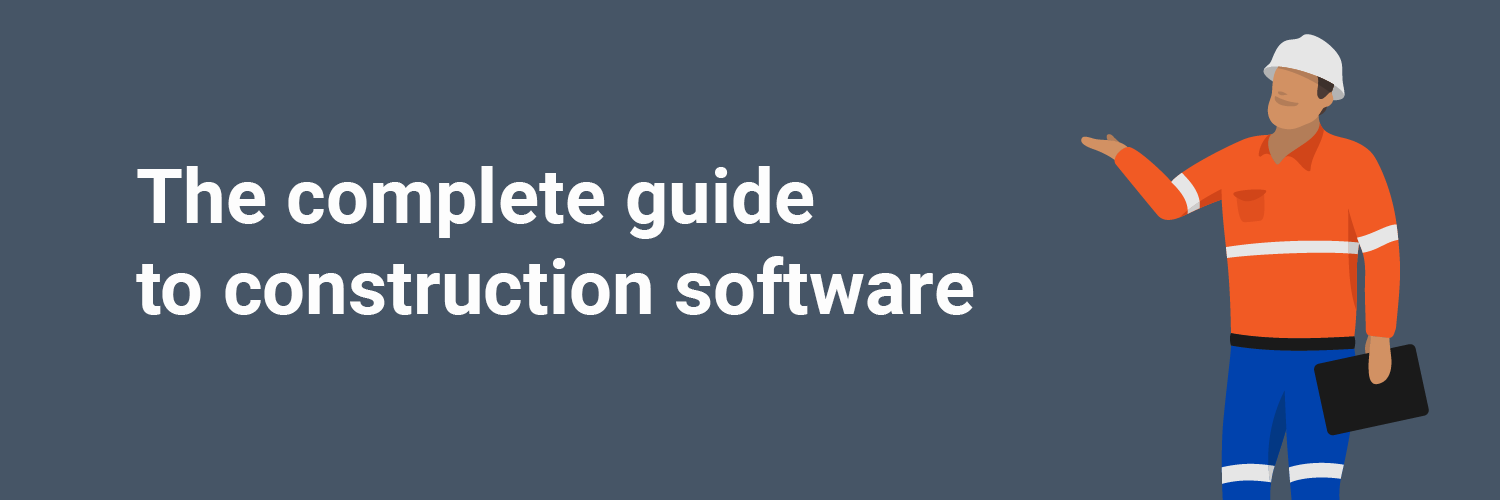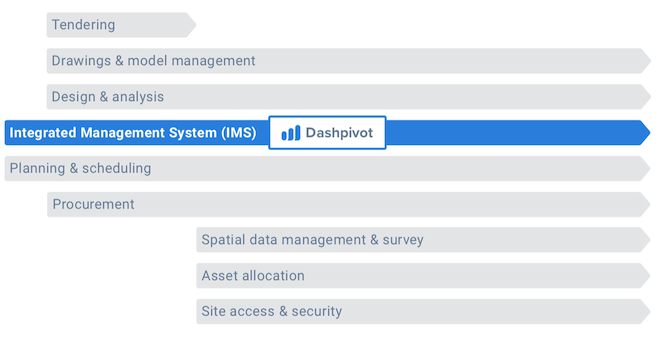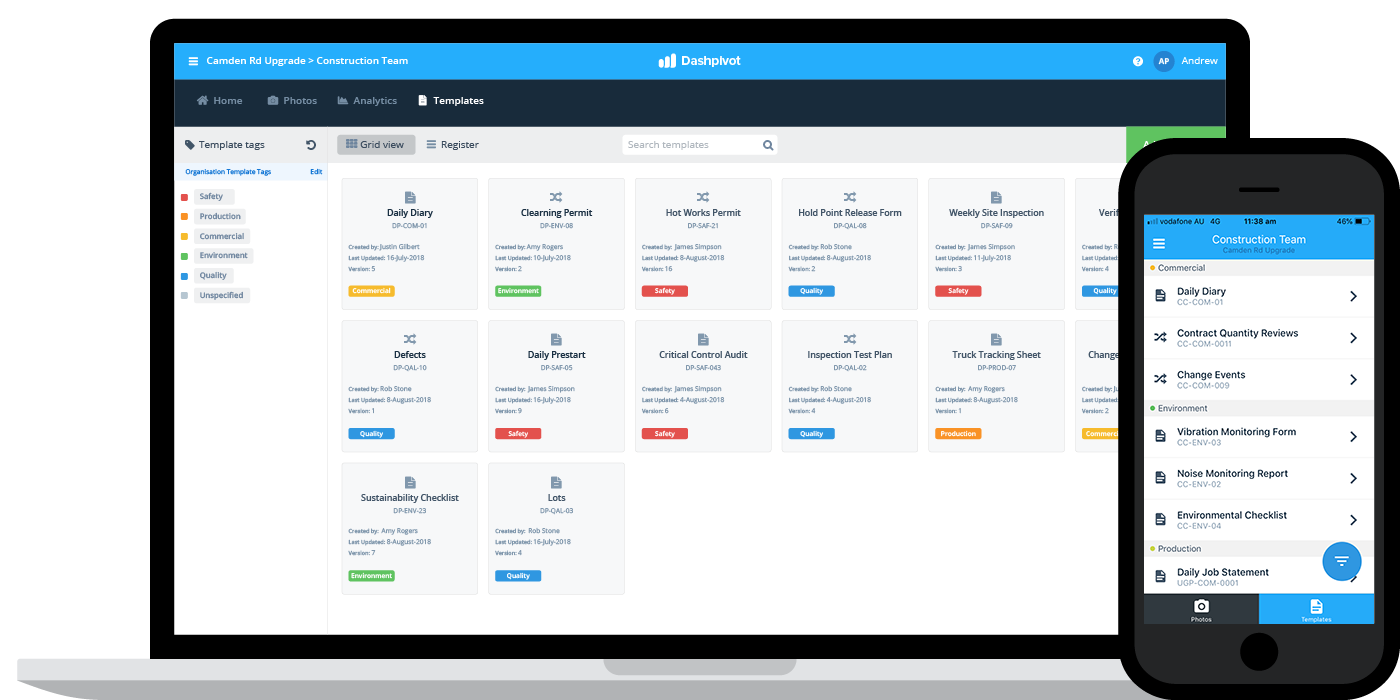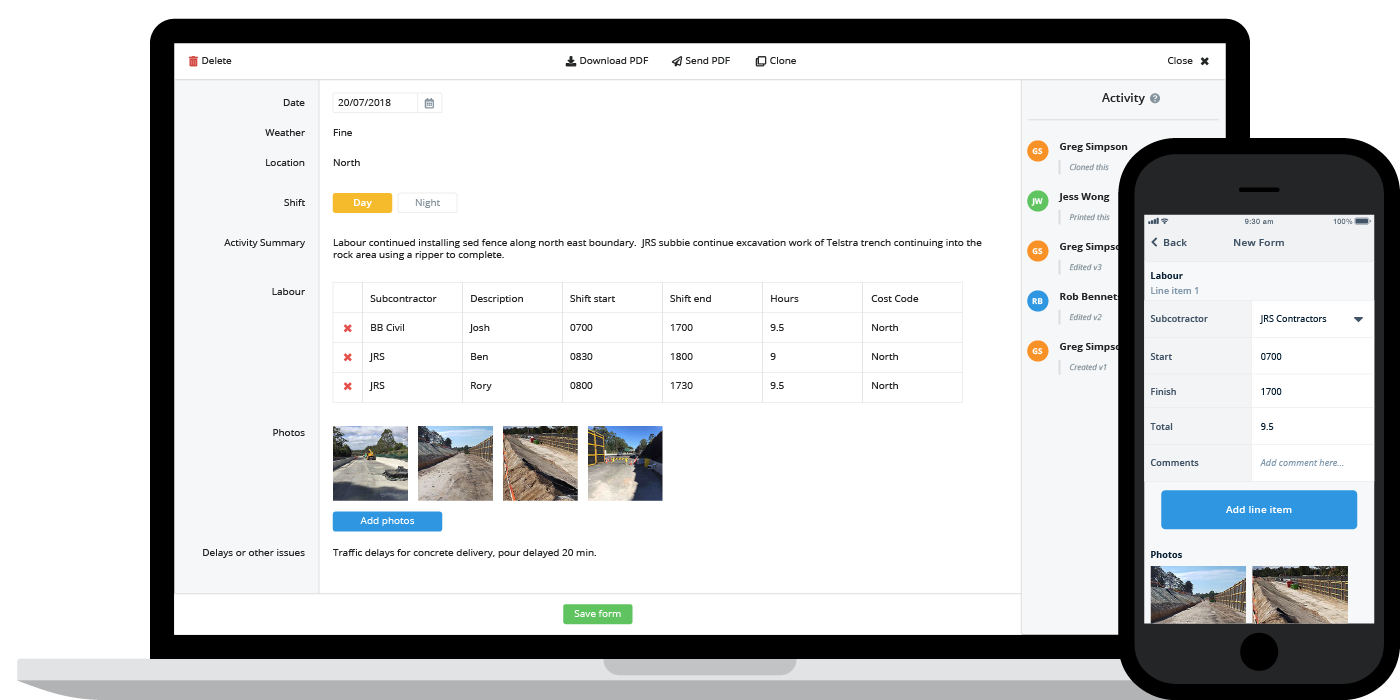Software – Construction software

Construction software
What is construction software?
Construction software is any kind of software designed and built for the construction industry. Many different types and categories of softwares are used by construction companies of course, including financial and accounting tools as well as generic project management softwares, but when we refer to construction software, we are referring to the systems which were created for the construction industry and construction companies.
While this explanation appears simple and obvious, construction software is anything but.
Lumping all construction softwares together in a 'construction software' category isn't very helpful in an incredibly complicated and sophisticated industry where understanding the nuance of the jobs and tasks people and companies do is incredibly important.
Once of the major problems with construction software to date is that 'construction software' in general hasn't solved many of the issues of the construction industry.
Some people and pundits blame construction companies and workers for a lack of adoption of new tools and technologies, and while this adds to the problem, another issue is that the construction software landscape hasn't been understood or navigated properly.
Many construction companies have tried to adopt construction software, only to be left disappointed in what it did or didn't do. While no software is perfect, many workers and project managers have been looking for the wrong thing in the wrong place.
They have been looking for construction software when they are really looking for a software which solves a unique job or problem which they encounter. Ideally, a software solves more than one problem, but it likely won't solve all of them.
Understanding the construction software landscape is like understanding the construction company landscape. Different companies do different jobs really well, and they must all come together and work together seamlessly to deliver a project. And to make good decisions about which companies to work with, you need to know the project phase or job you are trying to solve, as well as who can offer the best solution.
Navigating the construction software landscape
There are some very distinct and specific tasks on every construction project. Some of these can be grouped and bucketed together in terms of their nature and workflows, while some are distinct and different.
For example, the drawing and model management phase of a construction project is not really like any other phase of the project value chain.
In contrast, a company's integrated management system groups a number of different jobs and tasks together, including different functions (safety, quality, production, contractual etc.) and different use cases (reports, permits, progress photos etc.).

The length or breadth of the job doesn't necessarily equate to the number of solutions or construction softwares on offer. The complexity of the software solution required as well as the market for that specific job (which factors in the cost of workers in that area, risks associated, costs of professional services) dictates how many software companies enter that space.
And there are of course other variables and nuances involved too.
For example, the construction design software space is huge, because design is extremely expensive and extremely risky. Digitising many of the manual tasks in this area can save architecture, design and engineering firms an incredible amount of time and money - and they are willing to pay for this.
In contrast, specific tendering softwares are less common. Although tenders are extremely important, they happen over a short period of time, aren't done every day and will always require some level of manual work and customisation. This construction software space isn't as appealing as many of the others, because companies aren't hurting (or spending) as much there.
The core functionality of construction software
So when we do understand and break down the construction software landscape, what are we left with.
Firstly, we are left with some big construction software categories. These categories illustrate many of the most painful and admin heavy parts of running a project, as well as the universally applicable parts of managing a construction project like documentation and planning.
Here's some of the meatiest construction software categories, and the typical functionality associated with each category.
Construction software for estimating
Construction software for estimating is one of the largest construction software categories. Construction companies are business, and in order to make money, they need to estimate the cost of their projects and ensure that they then make money from managing or participating in the project.
In addition to its importance, estimating is universally applicable. Every construction company estimates their projects (with different levels of sophistication of course).
The features and functions you can expect from your construction estimating software include:
- Accounting and financial integrations
- Audit trails
- Historical databases
- Reporting and analytics
- Subcontractor management
- What-if analysis
Construction estimating software can be included in broader construction software packages, as it does also play and feed into other parts of project management including change orders and variations.
Accounting software
Construction estimating software is typically tightly coupled with an accounting software or tool, which is the next big category of softwares used in the construction industry.
Unlike many of the softwares here, accounting software tools aren't typically designed for construction companies, but accounting is generally the same across industries and work, so they work perfectly fine.
The features most good accounting softwares feature include all the fun stuff:
- Accounts payable & receivable
- Billing and invoicing
- Budgeting and forecasting
- Cash management
- Construction breakdowns
- General ledgers and job costings
- Payroll and purchase order management
Unlike some of the other categories here, accounting softwares rarely do any of the other jobs in the construction industry. The best way to approach this category is to integrate your construction software with your dedicated accounting software.
Project management software
Construction project management software is almost as broad a category as construction software, and it's almost just as confusing.
As you can imagine, general project management solutions often include modules for estimating or scheduling because they are big components of managing a project, but the most urgent problems companies need to solve using this category is project delivery.
For almost all companies, project delivery involves capturing, organising and tracking work on site. The largest software component of these elements is the IMS or information management system.
An information management system is the system (and often software) by which a company manages the storage, organisation and retrieval of information.
For construction companies, this involves storing contractual information, production information, financial information, safety information, environmental information and general progress documents, records and photos.
Some companies still manage project delivery and tracking with word docs, PDFs and excel sheets, but this massive admin burden and cost overhead can be dramatically improved with the following project management features:
- Digital forms for reports, inductions, checklists and more
- Mobile access
- Commercial
- Change orders
- Contract management
- Contractors and subcontractors
- Photos and videos
- Incident reporting
- Analytics dashboards
Some of the larger project use cases including site diaries and punch lists have their own dedicated apps or modules, but you can consolidate more of these use cases into a single solution using the right project delivery software.

Construction scheduling software
Scheduling is another huge part of managing any construction project, and is something which continues and stays important from the start to the end of a project.
The construction scheduling software space is made up of some dedicated construction solutions, while other vendors are more general gantt chart and scheduling tools.
Some of the functionality you can expect from construction scheduling software include:
- Job scheduling
- Task management
- Re-scheduling
- Project scheduling
- Variations
- Mobile access (for updating the schedule)
- Budget tracking and job costing
Keeping a construction project on schedule is one the two major dimensions of performance with cost, and using software to improve the speed and accuracy of scheduling is one of the best and easiest wins available in the construction software space.
Construction design/architecture software
The design phase of a construction project is big, risky and expensive, and it features its fair share of software solutions. Many design elements of a construction project are extremely important throughout a construction project, so many of the softwares focus on providing strong document governance, access and portability.
Some of the core features included in design and architecture software are:
- Modelling
- Drafting
- Bills of materials
- Building information modelling (BIM)
- Contract management
- Document management
- Quote and proposals
Like a few of the construction software categories, design softwares are typically very specific for designers, engineers involved at this stage of the process and architects and won't have much spill over into your other softwares and tools.
Buying and implementing software
Most construction companies today see and understand the value of construction software. Many of them have severe headaches from managing incredible amounts of paperwork and admin, and are actively looking for ways to improve the way they work.
But construction companies are also cautious and wary of softwares too. They know the ways they are doing things might not be perfect, but they are comfortable, known and predictable.
They also have many different types of people and demographics working on their sites and in their office. There is of course some friction associated with moving process and procedures in any way because people are resistant (and in some cases opposed) to change.
But two recent advancements (which are tightly linked) have dramatically reduced the barrier to software adoption for construction companies and builders.
These two things are cloud-based softwares, and the incredible adoption of mobile technology.
Cloud based construction software
Cloud-based construction software has changed the construction software landscape forever. In the past, a construction company would need to setup their own software infrastructure and endure long and expensive deployments of their new solutions.
This was costly, and also carried a lot of risk. It was also slow. Construction projects don't stop or wait for software implementation, so companies couldn't afford to transition to new ways of doing or thinking.
The cloud changed all of this.
Construction companies of every size have access to cloud-based softwares now. These softwares can be tried for free, subscribed to monthly, and instantly deployed - dramatically reducing the risk of implementation.
You can actually roll out a single use case on a project to see how the software works before seeing value and making a commitment.
In fact, we see consistently that this is the best approach and method of software implementation. Start with a common and known use case and expand when you find your desired result.
In addition, the software companies behind these construction softwares are software companies. They spend all of their time and energy on building great, easy-to-use software. They also constantly update and improve the systems - unlike construction companies who build their own software.
Construction apps
The 'cloud' has also coincided with the mass adoption of mobile technologies. Mobile technologies (phones and tablets) have put the power of software directly into the hands of supervisors, engineers and all workers on site.
Instead of carrying around and filling out paper forms, construction workers can now open their mobile device, fill in information and sign it off digitally. This information is then instantly synced back to the office where project managers and administrators can open it, access it and use it straight away.
This obviously improves the quality and accuracy of information and records, but it also dramatically speeds up the movement of information from site to the office and to the point of decision.
People no longer need to wait for forms and documents to be scanned and emailed, and they no longer need to spend their time entering data manually and re-formatting information collected from the field.
Good mobile apps are so tightly connected and integrated with their feature-heavy desktop versions that no formatting or data entry is required to move data from site to the person who needs it, and then to a storage space or construction database.

Try this construction software for free.
The future of construction software
While the advances in construction software have been massive and well received, the future of construction software will be even more impressive.
Some of the most appreciated and impactful advances will be continue to be in ease-of-use and flexibility.
Construction companies today have higher and higher expectations for softwares and what they should be able to do, so finding a simple yet powerful solution which can be easily implemented will be a priority.
In terms of features and functionality, the major advancements will be in data and information automation.
At the end of the day, the largest investment of time and money in construction projects (outside of actual construction) is the management and movement of data.
Thousands of contracts, materials, purchases, employees, sign ons and more occur every day, and keeping track of all of this data in an efficient and accurate manner is incredibly difficult.
Smart devices and smart objects like trucks will engineer out the need to document many things, as they will automatically keep track of production, progress, operating health and other important metrics. This is the data capture portion of construction software.
Next, machine learning and AI algorithms will better understand and sort this data for project managers and other decision makers so that they can make the best decisions possible. This is the organisation of data.
And finally, all of this data will be crunched and displayed in better formats, without the need for any re-formatting or data entry. The same information coming from site will be available in just the right format, whether that be a gantt chart or customised dashboard.
These are just a few of the very real promises being made amongst construction software and technology companies.
At the end of the day, the main purpose of software is quite simple: it automates the repetitive tasks (even if complex) so that people can spend more of their time adding more value to projects and companies.
Construction software has come a long way already. But it's got a long way to go.
People in 100+ countries use this construction software to capture, organise and track their construction projects.
